 Punto in aria lace is considered the first true lace because it was meticulously created by a needle from thread, not a cutwork on a woven fabric. This lace technique derived from a reticella technique. Both are Italian and were used to create masterpiece collars, trimmings, and other elements of festive clothing. And both look astounding – so airy and delicate. Even by today’s standards, reticella lace and punto in aria lace are beautiful and skillfully made.
Punto in aria lace is considered the first true lace because it was meticulously created by a needle from thread, not a cutwork on a woven fabric. This lace technique derived from a reticella technique. Both are Italian and were used to create masterpiece collars, trimmings, and other elements of festive clothing. And both look astounding – so airy and delicate. Even by today’s standards, reticella lace and punto in aria lace are beautiful and skillfully made.
Reticella lace (also called “reticello”, “point coupé”, “point couppe”) – intricate needle lace from the 15th-17th century. At first, it was a form of cutwork made on a linen fabric – some threads were pulled out to create a pattern of holes. But the later samples of reticella lace were made from thread with the help of a needle, sort of woven or crocheted. This lace technique was very popular; the artisans created collars, cuffs, trimmings, and so on. Many royals, men and women, loved to use such delicate and elaborate lace-trimmed garments in their wardrobe.
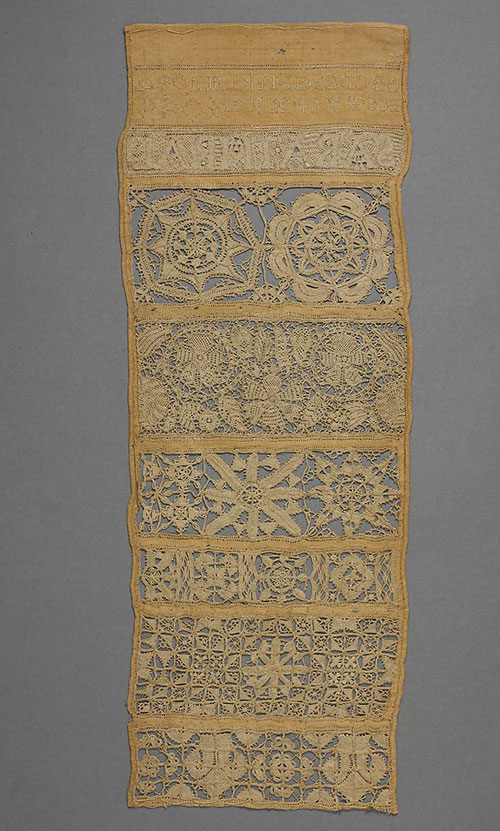

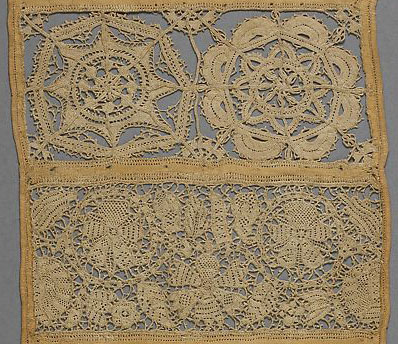
Sample of whitework reticella lace by artisan Sarah Thral. Great Britain, 1644. From The Met Museum
Punto in aria lace derived from reticella lace. The name literally means “stitch in air” because this technique was the first to use a thread and a needle and not a piece of linen cloth. It’s not cutwork but a separate technique of creating lace. And this Italian lacemaking method is considered the first true lace. While reticella lace mostly could design geometric patterns (it’s determined by the way this type of lace is made), punto in aria lace could create not only geometric shapes but various other patterns. You can weave practically whatever you want with a thread and a needle.
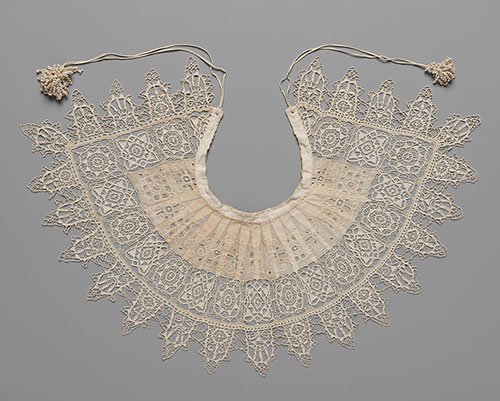

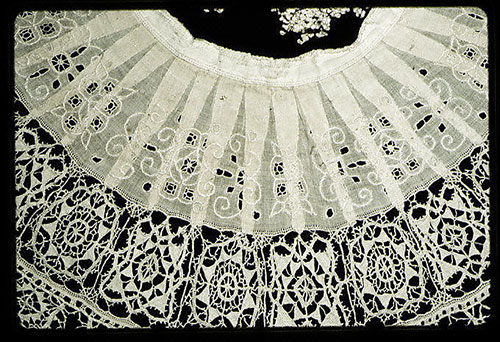
Lace standing collar made using the punto in aria technique. Possibly French, about 1610-1620. From The Met Museum
To make punto in aria lace, the craftswomen used a piece of linen fabric as a base. Then, the pattern created from a thread was laid over the cloth. And when the lace piece was ready, the linen base was separated. Thus, you got a smooth and neat lace fragment.
Both reticella lace and punto in aria lace are mighty fine decorative elements that made festive 15th-17th-century clothes look extraordinary and expensive. You can imagine how costly such lace trimmings were, based on the skill and effort it took to create intricate lacework by hand.
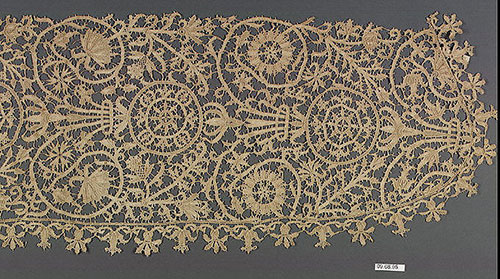
Punto in aria lace border. Italy, the 16th-17th century. From The Met Museum


